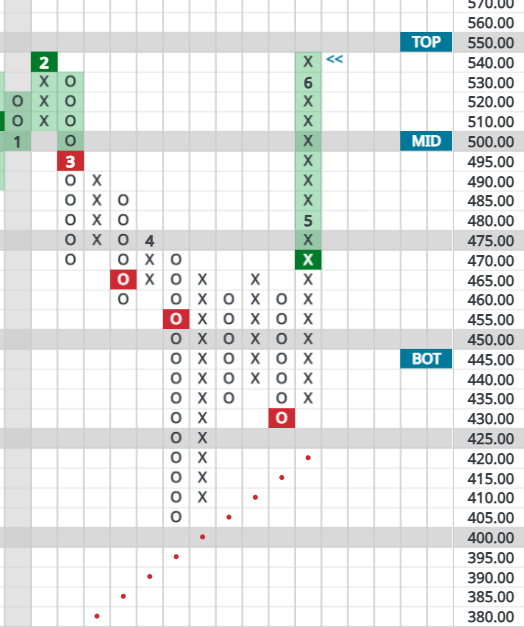The action of the US dollar can have major implications on both a strategic level (the economy) and a tactical level (such as a “tactical” investment strategy). For this simple reason, we find it prudent to consider the position of the US dollar when implementing or revising your investment strategy.
In a market that has seen extremes in both bullish and bearish sentiments over the past year, watching related markets like the US Dollar (USD) can be remarkably beneficial, not only to have a fuller understanding of larger economic trends, but also to ensure your investment strategy is executed with a more-broad perspective.
Due to the USD’s standing as the world’s dominant reserve currency, the impacts of a strengthening or weakening dollar can be far-reaching – even outside US borders. A stronger USD signifies a tighter international trade market, as players will need more US Dollars to pay for higher prices in the commodity market or higher prices for imported goods. This is reversed for US-based consumers as the US can import more goods with a stronger USD. The opposite is true as well, as a weaker USD can be displayed in more expensive imports (as it costs more USD to import the same amount of goods) and decreased consumer spending, but can potentially lead to an easing of monetary policy, creating potential for favorable lending rates.
The USD understandably began weakening in March 2020, where it continued to decline in strength for the remainder of that year. 2021 saw stability in the USD over the first half of the year, and a rapid strengthening from May 2021 through October 2022. The dollar started to dramatically weaken in early November of 2022, and only recently has expressed a slight slowing in its deterioration with a subtle direction changes over the first half of February 2023. From the start of the year through the time of this writing (2/10/23), the ICE U.S. Dollar Index Spot (DX/Y) was down 0.36%.
Equities
- A strong USD favors domestic stocks for US investors
- A weak USD favors non-US stocks for US investors
This typically translates into outperformance in the investment markets of broad asset classes such as Domestic Equities and non-US Equities. Year-to-date, the iShares MSCI EFA ETF (which represents developed market (Europe, Far East, Australia) securities) has returned 8.18% versus the S&P 500’s return of 6.30%, correlating to the dollar’s weakness, as expected.
Corporate Earnings
- A strong USD favors domestic companies earnings trends for US investors
- A weak USD favors non-US company earnings for US investors
As a means of emphasizing the importance of the USD as it relates to all thing economic and business, earnings season is always bringing out dialogue from public companies’ CEOs and CFOs during earnings calls. Late 2022 and thus far in 2023 has underlined the importance of the USD positioning in the world economy, as it has become a concerning category that many C-suite executives are bringing forward right out of the gate.
For multinational companies that see a large portion of their revenues derived from overseas, a weak dollar produces tail winds. Many of these calls cite the phrase of feeling the “headwind” from a strong dollar, until recently. So much so that we are now seeing a metric becoming a larger part of recent earnings calls, as management refers to “constant dollars.” Constant dollars is a term used to describe the value of the dollar in terms of value at another point in time.
Treasury Yields
- A strong dollar represent headwinds to US bonds for US investors
- A weak dollar present challenges for US bonds for US investors
While there are many other factors that play into interest rates, dollar movement generally implies action described above, though the correlation is not as strong. This also ties into rate expectations as well: rates have fallen recently (although not significantly), which has correlated to a falling dollar, which began at the end of 2022 as seen in the chart above.
Inflation
One of the main reasons that the traditional outlook of a decreasing value in the US Dollar is considered to be inflationary, is its central role as the global reserve currency.
While there are lagging effects that should be accounted for, the general trend between the dollar, equities and earnings, bond yield, and inflation has been strongly correlated over the history of the markets. In an environment of increased volatility and forecasts, you should consider factoring in dollar movement in your investment strategy. If you’re not sure how to implement these observations, Granite Wealth Management will gladly sit with you to review your current strategy and offer advice on particular considerations to be had when executing your strategy, and we also have model strategies that account for economic conditions, such as the weakening dollar, of which you can take advantage.


